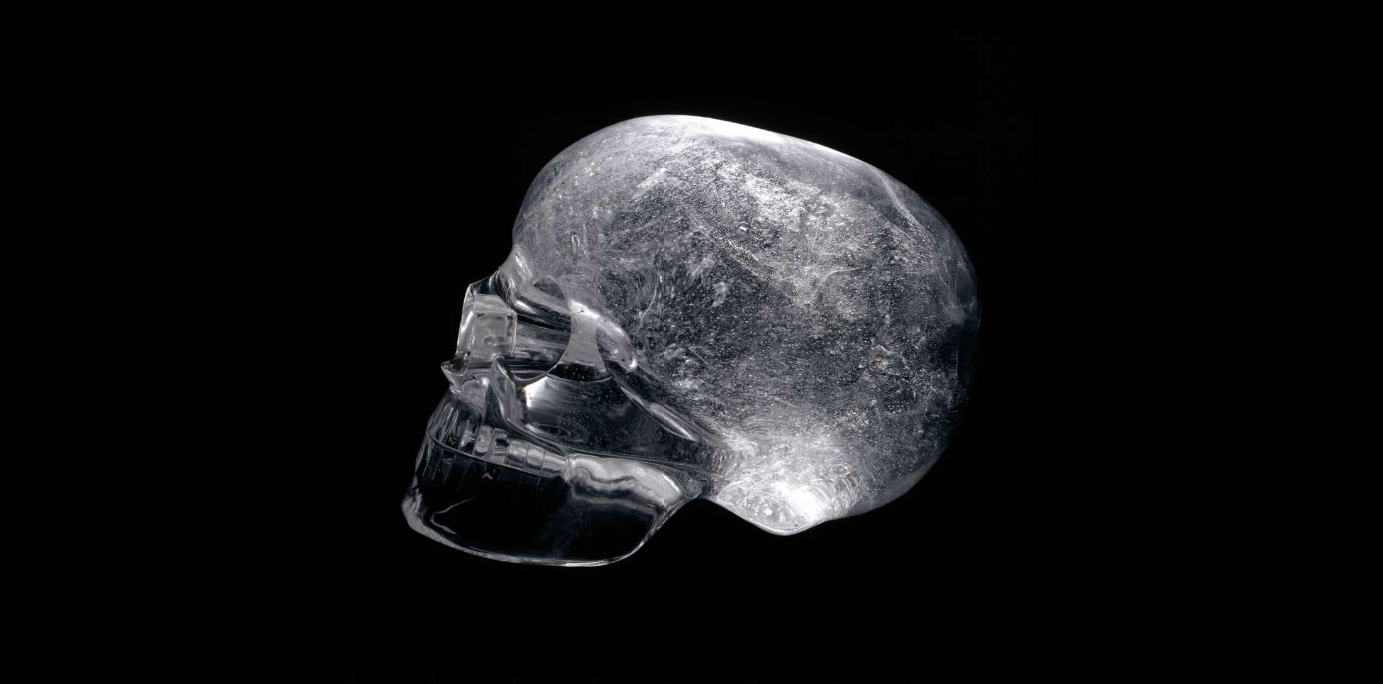Arguably some of the most iconic archaeological artifacts ever to supposedly come out of Mesoamerica, the famous Aztec crystal skulls have inspired countless blockhead theories about alien sculptors, psychic technologies, and magic stones. In reality, however, the supposed pre-Columbian relics might just be cheap knock-offs sold by a nineteenth-century French conman.
The story of the crystal skulls
It’s thought that there are around a dozen of the skulls in museums and private collections around the world, ranging from a couple of inches in height to roughly the size of a bowling ball. The shiny noggins made their debut in 1856, when the British Museum purchased a miniature skull that was said to have been crafted by Aztec hands, although it’s unclear exactly where the piece came from.
The British Museum then purchased a second crystal skull from Tiffany & Co. in 1897, and it’s this piece that can be seen on display today. Despite initially believing the skull to be pre-Columbian, the museum says that “attempts to verify this on technological grounds have not proved successful,” and that the item’s origins are “most uncertain.”
Other crystal skulls of varying sizes soon appeared in the collections of Mexico’s National Museum of Anthropology and the Smithsonian Institute. It wasn’t until the 1950s, however, that a Smithsonian mineralogist named William Foshag identified the latter as a fake after noticing that the piece had clearly been created using modern jewelry-making tools.
A few more skulls popped up at antique auctions in the 20th century, including one that was sold to an English deep-sea fisherman in 1943. Known as the Skull of Doom, the artifact is rumored to emit blue lights from its eyes and cause computers to crash, but has clearly been made using modern technology and is quite clearly a fake.

A side-on shot of the mysterious crystal skull.
Did the Aztecs make the skulls or not?
Skulls feature prominently in Aztec iconography and are often found carved into the walls of ancient temples or on depictions of deities. However, no crystal skull has ever been documented at any archaeological dig in Mexico or elsewhere, and none of the examples in museum collections can actually be traced back to an excavation project.
Having said that, countless representations of skulls have been found at Aztec sites, though these are typically carved in basalt rather than crystal. Stylistically, these pre-Columbian relics are usually quite different from the crystal skulls, all of which makes it rather unlikely that the Aztecs actually produced the famous bonces.
Are all the skulls fake?
By the turn of the millennium, archaeologists were beginning to suspect that most – if not all – of the Aztec crystal skulls were fake. Hard proof eventually came in 2008, when an anonymous donor mailed a skull to the Smithsonian Institute, claiming to have acquired it in 1960 and insisting that it had previously belonged to the Mexican dictator Porfirio Díaz.
The largest of all the crystal skulls, the item was handed over to an anthropologist named Jane MacLaren Walsh, who teamed up with Margaret Sax from the British Museum to analyze both the Smithsonian skull and the specimen housed in London. Using scanning electron microscopy, the pair found that both skulls were carved with rotary wheels and could therefore not have been produced using Aztec technology.
The Smithsonian skull, it turned out, had even been finished with a synthetic abrasive called carborundum, which wasn’t invented until relatively recently.
Walsh and Sax then analyzed the fluid and solid incursions in the quartz from which the skulls were made, determining that the rock was forged in a “mesothermal metamorphic environment.” This ruled out Central America as a source and indicated that the crystal most likely came from either Brazil or Madagascar, neither of which appeared on Aztec trading routes.
Ultimately, Walsh and Sax concluded that neither skull was pre-Columbian in origin, and that both were probably manufactured less than a decade before they were purchased.
Where did the crystal skulls come from?
Though it isn’t possible to trace the history of all of the skulls, records show that the quartz dome housed at the British Museum was originally acquired by Tiffany & Co. from a French dealer named Eugène Boban. Several decades earlier, Boban had displayed two other crystal skulls at the Exposition Universelle in Paris, which was hosted to showcase his findings as the official archaeologist of the Mexican court of Maximilian.
However, despite being a member of the French Scientific Commission in Mexico, Boban was not a professional archaeologist, though he had spent much of his youth conducting his own unofficial excavations in Mexico. As far as anyone can tell, it was Boban who first started flogging crystal skulls in the 19th century – a time when the first genuine Aztec artifacts began appearing in museums around the world and the public developed a fascination with this enigmatic ancient civilization.
The fact that no crystal skull had appeared in any archaeological dig didn’t deter Boban from passing them off as genuine Aztec relics – and most museums were more than happy to believe his claims regarding their authenticity, knowing that a crystal skull would undoubtedly bring in the punters. In spite of this, the skull that eventually found its way to the British Museum was actually rejected by the director of the Museo Nacional de Mexico in 1885, who denounced Boban as a scammer.
Undeterred by this setback, Boban promptly found an alternative seller, and the world soon became obsessed with fake Aztec crystal skulls.
An earlier version of this article was published in February 2023.
Source Link: The Truth Behind The "Aztec" Crystals Skulls Continues To Fascinate